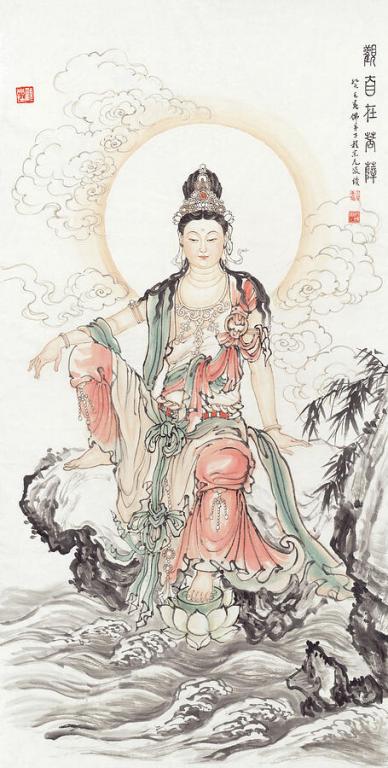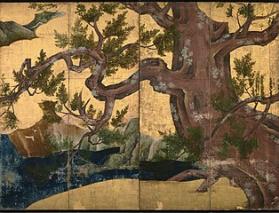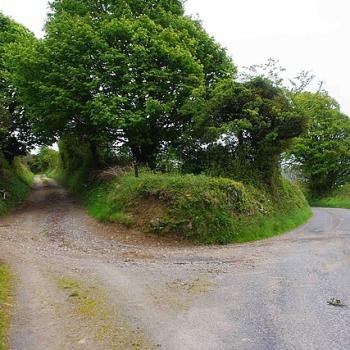Once upon a time there were sixteen bodhisattvas. It was bath day and they entered the waters together. Simultaneously they all realized the cause of water.
They called out as one voice, “This marvelous touch has illuminated all things. We have reached that place where the daughters and sons of the Buddha all dwell!”
Blue Cliff Record, Case 78 (my paraphrase)
I’ve long loved this case, as we call individual examples of the traditional collected koans. It is also one that my koan teacher John Tarrant was particularly fond of returning to from time to time.
A koan is a matter, as the great Zen teacher Robert Aitken, told us, to be made clear. Or, one may consider a koan as a pointer to some aspect of the great matter of life and death presented together with an invitation to stand in that place.
A koan is nothing less than an invitation into the healing of our broken hearts.
Their parentage can be varied, ranging from conversations between teachers and students, between teachers, bits of folklore, snippets of poetry. Basically anything that the teachers of Zen find useful. The source of this particular koan can be found in the Surangama Sutra, one of those fascinating spiritual texts of uncertain provenance. Zen teacher Bodhin Kjolhede notes how in the Sutra,
“The first bodhisattva says, ‘As for my realization, seeing a sight was the primary cause of it.’ The second says, ‘Smelling a fragrance was the cause of my realization.’ The third one cites taste as the cause of his realization. The fourth one, and fifteen other bodhisattvas besides – the sixteen of this koan – make obeisance to the Buddha, and one of them, the spokes-bodhisattva, says, ‘We formerly heard the preaching of the first Buddha and became monks. At the monks’ bath time, following the rule, we entered the bathroom . . .’ And he goes on to relate their experiences. In this account the first bodhisattva says, ‘We did not wash off dirt, did not wash the body.'”
That mysterious “not” is a favorite pointer on the Z en way. It is the negation that becomes a great affirmation. The koan within the koan, if you will. And with that subtext to the version of the case which we get, gives us the power of touch when our idea of touch is surrendered into a vastly larger matter. This is an invitation into transformation.
Coming at the matter from another angle, I’m very much taken with the whole idea of bodhisattvas. Bodhisattvas in our received tradition are people who’ve seen into the great matter that binds life and death, but who resist passing into the great empty beyond all ideas of separation, until the whole of our suffering world can pass over together.
That little bit of resistance brings its own power.
This resistance, this hesitation, this turning back and calling forward to the many hurting beings, as you may know, is also a bit of an inside joke for Zen folk. It turns on the fact we, all of us, every blessed one of us from you and me to stars and to elephants to strands of the Ebola virus are awakened from before the moment of the explosion of the stars and planets into existence.
We only lack insight into who and what we really are from the ages before our birth. That’s all. But. Without that insight we are awash in hurt. So, noticing this truth about who and what we are is a critical thing. Giving our attention to that little bit of frisson, that hesitation, that turning back to the many suffering beings, is the very thing that liberates us all. It is the great turning of our hearts.
That loving glance, the desire to be of use, that surrendering our own liberation for another, is more precious than any marker of wealth.
It is the work of the Bodhisattva. It is our work.
Bodhisattvas are the reality of our lives lived authentically. They are what we are at our best, what we are when we surrender our ideas of self and other. A bodhisattva is what we were from before the dancing procession of planets, stars, galaxies, black holes, all of the wonderment of our emergent reality.
And in this case, with this koan we’re presented with one of the countless gates into our noticing of that which has always been so. In this case through touch. The touch of water, specifically. But, it can be any kind of touch. A lover’s touch. A mother’s touch. Someone anxious about a friend, her touch. Simply picking up a glass of water. That touch.
And, there are those other gates we heard of in the original source of this koan. So, endless gates. Of course there are endless gates. We name six in particular. Touch, for one. Here the touch of water. But also it could be smell, maybe the smell of that meal your mother prepared revisited tonight. Maybe its the sound of a crow scolding you as you walk by on an evening walk. Or, possibly, the taste of a perfectly prepared spaghetti dinner. I recall a recent evening when Jan and I stood out in front of our apartment building looking up into the evening sky and witnessing what they call the blood moon, an amazing total lunar eclipse. I’ve also noticed that possibility out of the corner of my eye while walking down the street. An unexpected vision, opening the door, inviting my walking through.
I would add in that our Buddhist way actually counts six senses. The five common to us all within our Western inheritance, and as common sense as common sense can be. And. The presentations of our minds. The human mind in its amazement, noticing, slicing, dicing, reflecting, predicting. That thing, too.
Gates. Doors. Endless possibilities…
But, also, as my friend the old Zen hand Stephen Slottow noted, it’s important to notice the sixteen bodhisattvas. Not one. Not just you or me. In fact we don’t realize the deep truths of reality by ourselves. Or, perhaps more correctly, we notice by ourselves, but what we find is that we’re all in this mess, wonderful, sad, mysterious, together. Together. Many beings. One body.
Just as it is. Just as we are.













